| HOME |
|---|

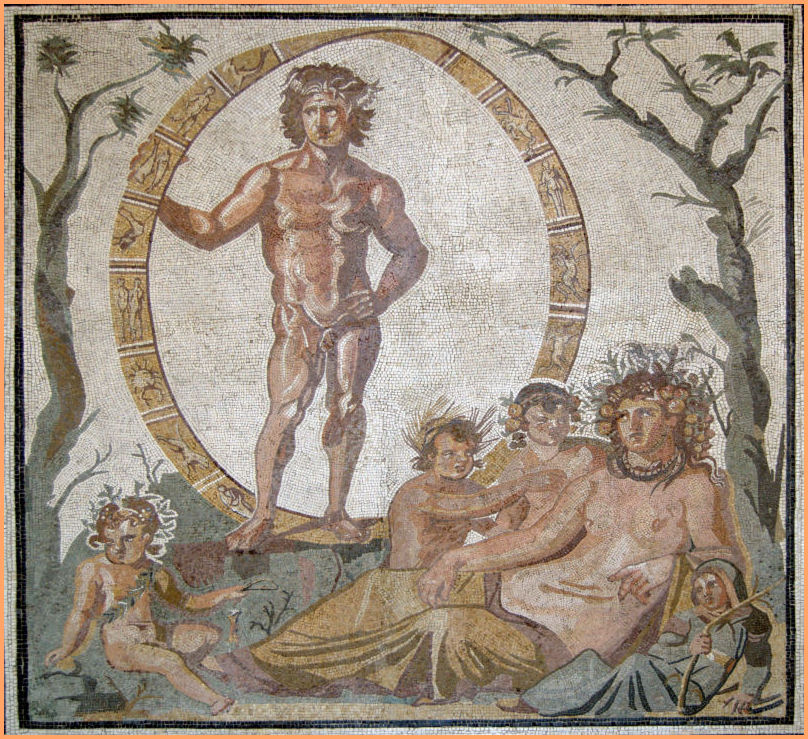
Tiled floor mosaic of Uranus/Aion and Gaia, Sentinum, Italy, circa 275 AD.
| HOME |
|---|


As we move outwards from the Asteroid Belt into the outer solar system, we encounter three successive generations of gods, from Jupiter, king of the gods, to his father Saturn, the first king of the gods, and finally on to Uranus, from the Greek "Ouranus", meaning sky, who was the father of everything. Uranus was the first father, formed by Gaia (Mother Earth) out of her own substance, back at the beginning of time when she was alone in the midst of chaos. Uranus was the sky, perched on the mountain tops, and he showered his seed down on Gaia, and she gave birth to plants and animals and gods and men.
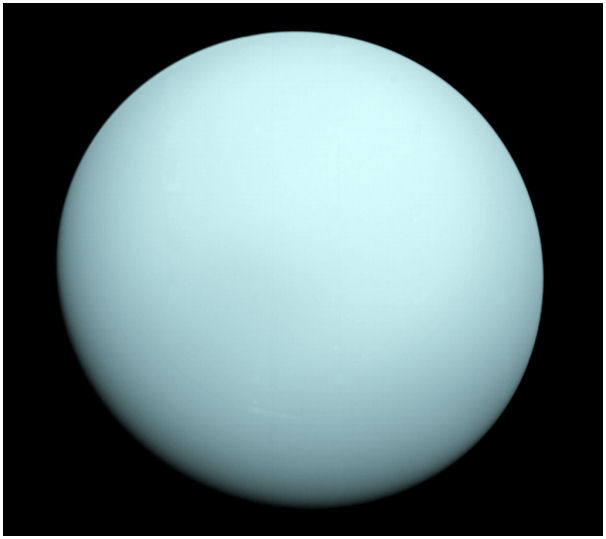
Uranus, the planet, is indeed perched on the distant mountain tops of the solar system. Just as Saturn was twice as far from the Sun as Jupiter, Uranus is twice again as far from the Sun as Saturn: 1.8 billion miles (2.88 billion kms). It has a diameter of 31,770 miles (51,118 kms) - many times larger than Earth - but because of its great distance, it appears as nothing more than a tiny blue dot in all but the largest telescopes. When it is imaged in infrared, the planet's rings become evident.
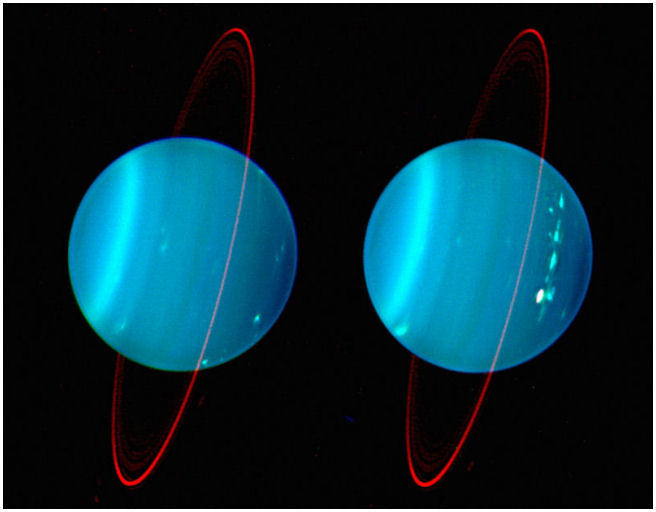
Uranus is unique in the solar system in that it is tilted 98 degrees to the plane of its orbit, so that it travels around the sun sideways - so to speak. One day on Uranus lasts 17.25 hours, and one year lasts 84 Earth years.
In January, 2006, the Hubble Space Telescope found two new moons and two new rings around Uranus. The NASA diagram below illustrates their exact location in the Uranus ring/moon system. At last count there were no less than 27 moons and 13 rings orbiting Uranus.
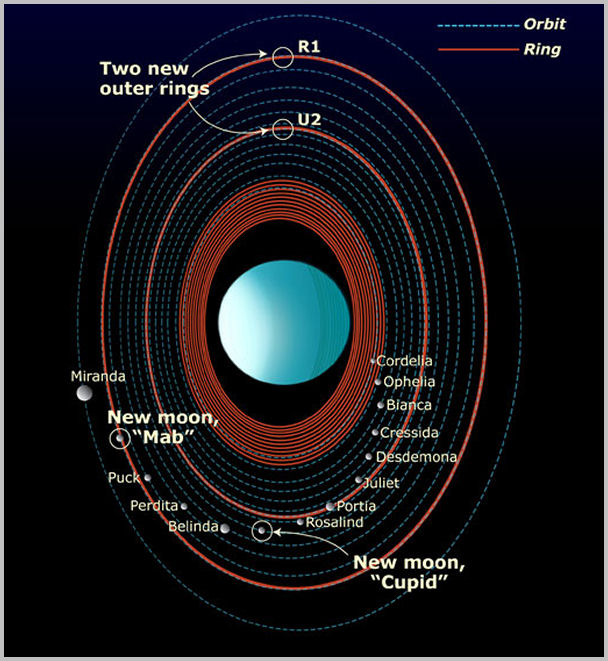
At magnitude 5.9, Uranus lies at the very limits of naked eye visibility. You will need the darkest of skies, very good eyes, and know exactly where to look. Even with a telescope, finding Uranus can be tricky. You will need at least a six inch scope and high magnification. If the "seeing" is good, you will be treated to the delightful sight of a tiny turquoise disk, ever so slightly different from the twinkling points of light around it that are the faraway stars. And you will wonder at the magic of being able to see an alien blue world that is almost two billion miles away. To help locate Uranus, a finder chart is essential, such as that offered by Naked EyePlanets.com.
Finally, we have the extraordinary photo below of the planet Uranus as it is seen from the great ringed planet Saturn. NASA's Cassini spacecraft, in orbit around Saturn, looks out over the rings of Saturn at the methane blue disc of Uranus, much larger and brighter than it is from Earth.
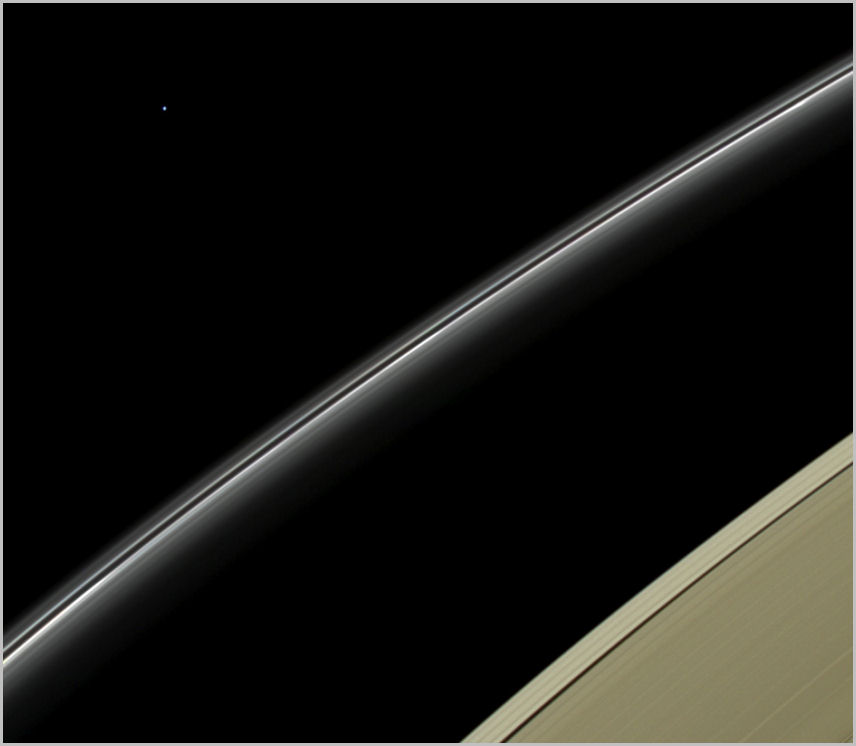
|
|
|
| SOL | MERCURY | VENUS | EARTH | METEORS | MOON | MARS | ASTEROIDS | JUPITER | SATURN | URANUS | NEPTUNE | PLUTO | COMETS |
|
|
|